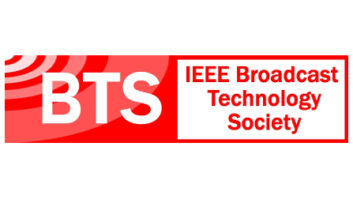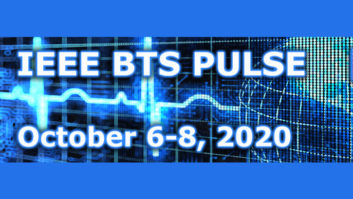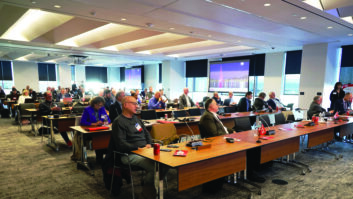Day two of the IEEE Broadcast Technology Society’s annual Fall Symposium initially focused on first on the rollout of the new ATSC 3.0 digital television transmission standard, with tips for a successful deployment of the standard within a TV operation, field testing of LDM (layered division multiplex) technology, and use of LDM in “gap filler” applications.
ALL-DIGITAL RADIO BROADCASTING
Radio then moved back into the spotlight with presentations on all-digital operations in both the current AM and FM spectrum.

Hubbard Radio’s Dave Kolesar described a recent experiment in which an existing Frederick, Md., AM station was transitioned to an all-digital test bed. The station, WWFD, had been operating for several decades, and its transmission plant wasn’t exactly digital-ready. Kolesar observed that if an AM station is already operating in hybrid digital mode, “it’s ready for all-digital; however, this was not the case at WWFD.”
Kolesar worked with Xperi’s Mike Raide in remediation steps, which included replacing the transmitter.
“It was a real mess,” he said. “There was really a lot to do to the antenna system.”
“We were fighting 30 years of neglect,” added Raide.
According to Kolesar, the effort was worth it.
[Read: IEEE BTS Explores Changes in Audio Technologies]
“We did drive testing in Maryland and Pennsylvania, and under ideal conditions the core mode could be decoded down to the 0.1 mV in the daytime,” said Kolesar. “The signal was good to some 70 miles distant.”
He added that nighttime reception “seems to be achievable beyond the nighttime interference-free contour when the C/No exceeds 20 dB.”
Equal time for all-digital FM was provided to David Layer, vice president of advanced engineering in the NAB’s technology department, to describe a similar testing program that was conducted in the Las Vegas, Nev. area during January and February this year.
He observed that the testing reinforced the belief that all-digital FM is more robust than today’s hybrid system.
“We were well into the middle of nowhere before we started losing the signal,” said Layer.
FCC CHIEF DISCUSSES FM TRANSLATORS
The chief of the FCC’s audio division, Al Shuldiner, provided the keynote address at the Joint IEEE BTS/AFCCE (Association of Federal Communications Consulting Engineers), with a major portion of his presentation centering on FM translators.

“I’m awed at the sheer volume of paperwork in the audio division,” said Shuldiner, noting especially the amount being generated by the initiative to resuscitate AM broadcasting by issuing FM translator licenses to operators.
“As of the end of September, we had issued 1,560 new translator authorizations to AM stations,” he said. “At this point, we only have a handful of applications left to resolve.” He noted that some 88% of the applications were granted with two months after they were received.
Shuldiner was quick to acknowledge that this spate of new stations had resulted in additional paperwork — interference complaints from existing full-service FMs and other translator licensees.
“We’ve seen the emergence of a kind of cottage industry devoted to creating ways to prove interference.”
“We’re trying to address this with a new rule-making procedure,” he said, noting that one the most important features would be to give owners of translators to move to any available frequency, rather than just moving to a first-, second- or third-adjacent channel.
“We hope that this additional flexibility will help eliminate interference in the vast majority of cases,” said Shuldiner. “We’re trying to strike a balance to protect our full-service stations from interference, while at the same time working to ensure the success of the thousands of new translator stations that in many cases are the key to economic stability for AMs.”
The day’s activities wrapped up with a panel discussion on “Radio in the Connected Car,” which was moderated by the NAB’s David Layer, and featured Digital Radio’s Ben Poor, the European Broadcasting Union’s Joe D’Angelo, and NextRadio’s Paul Brenner.
The symposium continues on Thursday with presentations on broadcast facility design, next-generation television, interference issues, and more.












